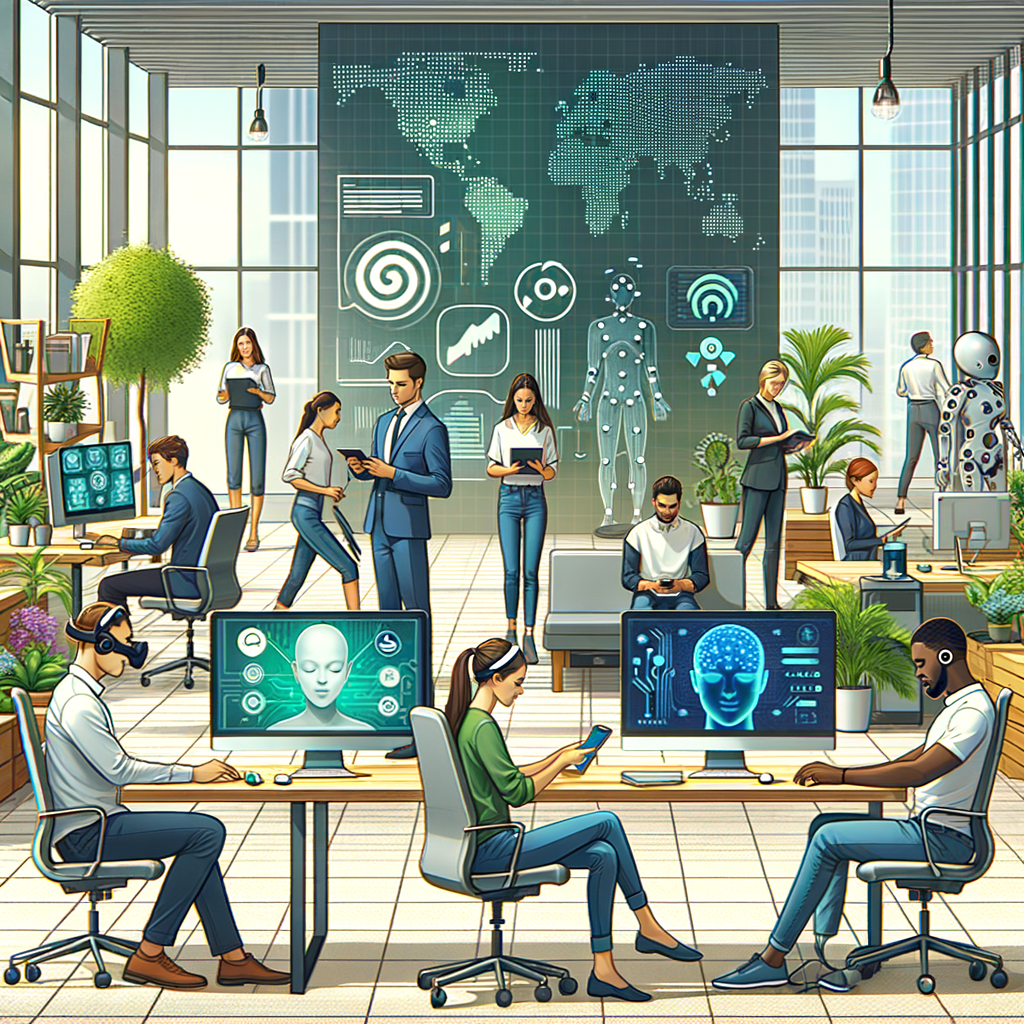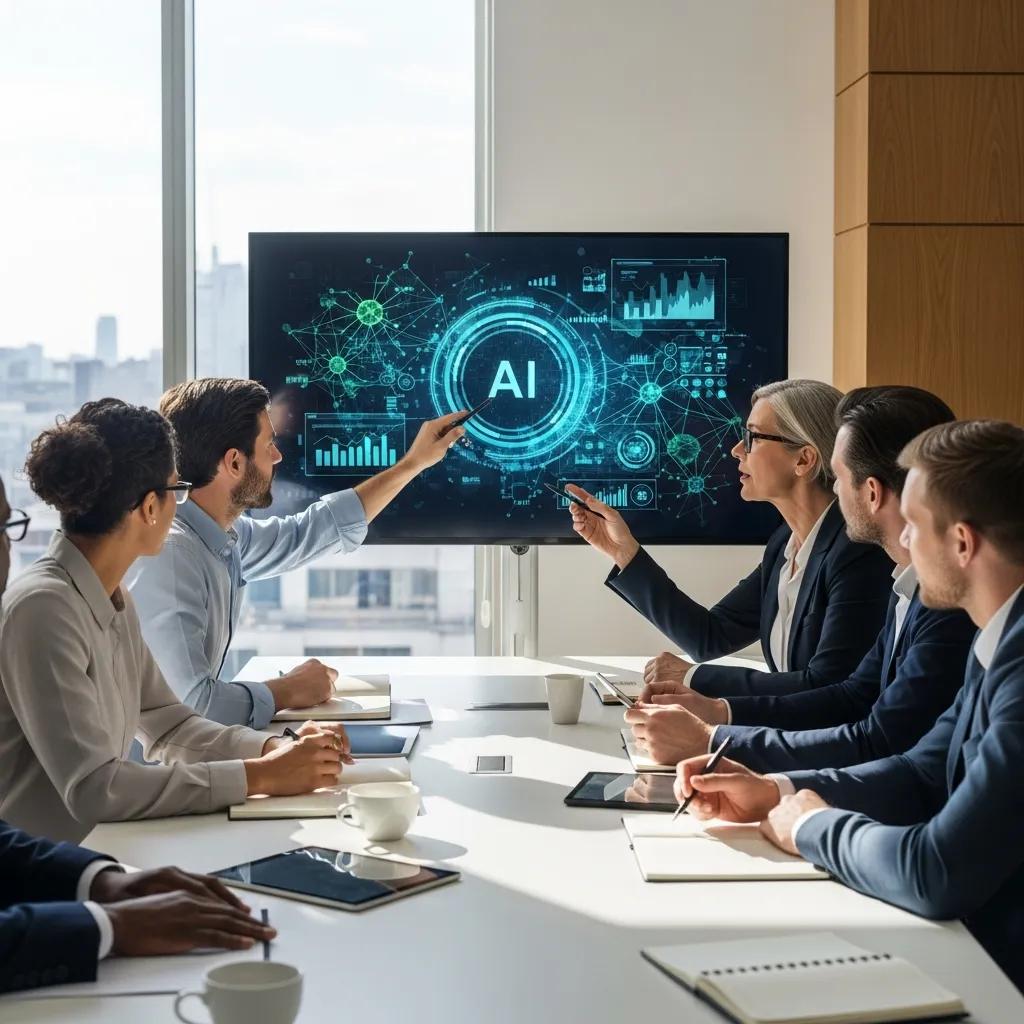Discussions about AI’s impact on the workplace are common. Some view AI as a transformative tool, while others express concerns about job displacement. Examining case studies of AI’s impact on employee well-being provides valuable insights.
The reality is nuanced. AI can both enhance and hinder employee well-being depending on its implementation. These case studies showcase the potential benefits and drawbacks for workers and the importance of wellbeing programs.
AI and Employee Well-being: A Complex Relationship
AI’s influence on employees is complex. Its effects, positive or negative, depend heavily on how organizations integrate AI systems into work environments and workflows.
The Good: How AI Can Boost Well-being
AI can automate repetitive tasks, freeing employees for more stimulating work. Think of algorithms analyzing data or virtual assistants managing schedules. This allows employees to focus on more engaging projects, positively impacting psychological impact.
Research suggests that workplace autonomy positively correlates with mental health. When AI handles mundane tasks, employees gain a greater sense of purpose. This improves job satisfaction, mental health, and overall well-being.
The Not-So-Good: Potential Downsides of AI
AI can displace jobs, leading to financial insecurity and impacting health support. The pace of AI development raises concerns about job security.
A PwC study predicts substantial growth in the global AI market, with widespread adoption by companies. This growth, while promising economically, adds to employee anxieties. Increased AI implementation can heighten feelings of constant monitoring and erode trust in management.
Ironically, AI tools, while boosting productivity, can increase loneliness among employees. This isolation can lead to unhealthy coping mechanisms, negatively affecting mental well-being and even social support from colleagues.
Case Studies: AI for Employee Well-being
Real-world case studies illustrate AI’s impact on employee well-being and the role of data-driven insights. They offer practical insights into implementing AI solutions effectively.
IBM’s AI-driven platform analyzes workforce data, including workload and health status, to offer personalized well-being recommendations. These personalized recommendations address specific employee needs.
Wysa, an AI-powered mental health chatbot, has partnered with several organizations, demonstrating positive outcomes. One partnership with insurer Vitality yielded encouraging results in a high-risk group. Another collaboration with construction workers through Local 18 resulted in a 95% user satisfaction rate with the Wysa app.
| Company | AI Solution | Key Result |
|---|---|---|
| IBM | AI-driven well-being platform | Personalized recommendations |
| Vitality | Wysa AI mental health chatbot | Positive outcomes in a high-risk group |
| Local 18 | Wysa AI mental health chatbot | 95% user satisfaction among construction workers |
Navigating the AI Revolution: A Human-Centered Approach
Organizations face the challenge of leveraging AI’s potential while safeguarding employee well-being. This requires a balanced approach, mitigating risks and maximizing benefits for a healthier work environment. Implementing AI successfully can reduce turnover rates, benefiting employee wellness.
Focus on Collaboration, Not Replacement
AI should be positioned as a collaborative tool. This approach emphasizes AI’s role in augmenting human capabilities, not replacing them. Studies show that employees who feel like valued team members contribute more effectively to organizational goals.
Leveraging AI for enhanced collaboration strengthens teams. AI excels at amplifying human expertise. AI, while increasingly common in global AI initiatives, doesn’t provide a competitive edge on its own.
Strategic integration with other technologies is crucial for creating fulfilling work experiences. An example of such integration would be intelligent knowledge-sharing platforms. These platforms efficiently distribute insights across the organization.
Promote Open Communication
Transparency is key when implementing AI. Openly communicating with employees about AI initiatives fosters trust. This involves honestly discussing the short-term and long-term implications of AI integration and exploring opportunities to enhance productivity through leveraging AI. A discussion with employee feedback on balancing efficiency with a human-centric approach ai implementation is key.
Maintain Human Connections
While AI enhances efficiency, prioritizing human interaction remains crucial. It’s important to create opportunities for employees to connect and engage meaningfully and discuss employee wellness, which benefits employee satisfaction.
Informal interactions contribute significantly to team cohesion and understanding AI, and offer health benefits by fostering social connections. A human-centric approach, combined with robust wellness programs and fostering social interactions, supports a thriving work environment that enhances productivity, human performance, and creativity, promoting a healthier work life balance. The primary focus should always be to provide personalized recommendations, enhancing job satisfaction, work-life balance, and healthy work habits. Understanding ai and maintaining mental well-being should be the focus when addressing specific concerns.
FAQs about Case studies: AI for employee well-being
How does AI affect employee wellbeing?
AI’s impact on employee well-being is twofold. While AI can reduce workload and increase engagement, it can also create job insecurity and feelings of isolation if not implemented thoughtfully. A human-centric approach to AI implementation mitigates these risks and creates productive workplaces. Learning algorithms should be monitored to ensure employee well-being and to provide personalized recommendations.
What is an example of AI in a case study?
IBM’s AI-powered well-being platform is a prime example. It delivers personalized recommendations, promoting healthier habits and better work-life integration. This use case demonstrates how AI can personalize and enhance employee experiences.
How can AI be used to achieve good health and well-being?
AI can empower employees with personalized feedback, targeted resources, and easier access to mental health support. AI-driven wellness programs can suggest healthy activities, and chatbots can provide immediate mental health assistance. These initiatives promote proactive well-being and address specific individual needs while ensuring employee well-being remains a primary focus. It can be designed to enhance employee experiences through personalized feedback and easier access to resources, including data analytics.
How to use AI for wellness?
Using AI for wellness begins with gathering and analyzing data, including employee feedback, preferences, and behaviors. Then the company needs to provide personalized wellness recommendations, and mental health solutions that resonate with employees, encouraging active participation. They can go the extra mile by offering educational materials on machine learning algorithms and how AI systems can enhance employee experiences and productivity in customer service or by analyzing employee performance data for more informed, data-driven insights to address specific employee needs and enhance human performance. Organizations increasingly prioritize understanding ai and data-driven insights as tools for providing personalized recommendations to promote healthier work environments and a fulfilling human experience.
"Leveraging AI for Sustainable Employee Well-being"
Case studies of AI’s application in employee well-being reveal both exciting possibilities and significant challenges. While AI offers immense potential, its impact on job security remains a valid concern. The ultimate outcome depends on the choices we make today regarding its development and implementation.
A thoughtful, human-centered approach to AI implementation is essential. This involves carefully balancing efficiency gains with potential social and emotional risks. Leaders must integrate AI responsibly and empathetically to create an environment where both employees and the organization thrive.
The case studies demonstrate that a people-first approach leads to positive outcomes for everyone. Companies increasingly look for innovative AI solutions for employee wellness as well as understanding ai and how it impacts the global economy. It’s essential to adopt a human-centric approach in implementing ai, which allows us to embrace ai’s ability to improve work while simultaneously recognizing and upholding the value of human interaction and the human experience.



